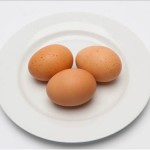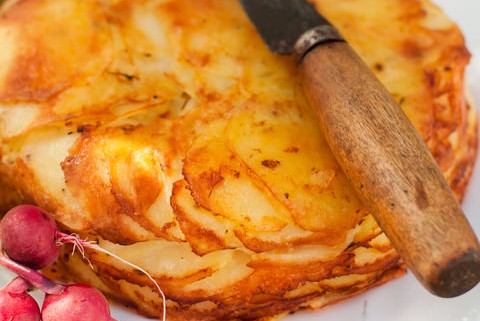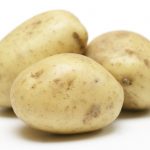A delicious recipe that children will love to help make. Tasty enough to have as a main dish with salad and a little sour cream, or serve as a side dish with some green vegetables.
Why not try growing your own potatoes in the garden? Or set up your own herb garden and use home grown chives to make this dish too.
Skills Check
Follow a recipe; follow food safety & hygiene rules; tidy away; cut using bridge/claw technique safely; snip herbs with scissors; use a box grater safely; use measuring spoons; use weighing scales; crack an egg; beat an egg; use the hob (with adult supervision).
Equipment
Knife, chopping board, box grater, measuring spoons, saucepan, baking dish, sieve or colander, large bowl, fork, scissors, oven gloves.
Allergens (Please note the allergens listed are indicative only. Allergens vary depending on brand; check the labels on the products you use)
Egg | Milk
Ingredients (serves 4, as a side dish):
- 5 eggs
- 8-10 egg-sized potatoes, scrubbed
- 100g cheddar cheese, grated
- 1 tbsp chives
- Black pepper
- Butter / Margarine
Method
- Preheat the oven to 180ºC / Gas Mark 4.
- Carefully slice the potatoes into rounds about 1cm thick.
- Put the sliced potatoes into a saucepan with just enough water to cover. Boil for about 10 minutes or until just soft.
- Use butter to grease a round, shallow baking dish about 20 cm in diameter.
- When the potatoes are ready, drain through a sieve and then tip into the greased baking dish. Spread them out evenly.
- Beat the eggs in a large bowl until well mixed and frothy. Snip in the chives with scissors and add some pepper to taste.
- Carefully pour the egg mixture over the potatoes and sprinkle with the cheese.
- Cook for about 20 minutes in the oven, until golden and set.
- Cut into thick wedges to serve.
So thinking about Cheesy Potato Bake...

Potatoes are a nutritious and filling starchy food; low in fat and a source of vitamin C and fibre.
Cheddar cheese can be high in saturated fats and salt. Use small amounts of mature cheese (it tastes stronger so you need less of it!) and choose low fat options where possible.
Nutritional Information
| Energy | 1053kJ / 252kcal | 13% | |
| Med | Fat | 13.0g | 19% |
| Med | Saturates | 5.9g | 30% |
| Low | Sugars | 1.2g | 1% |
| Med | Salt | 0.81g | 14% |
per 167g serving
% of an adult's reference intake
Typical values per 100g: Energy 631kJ / 151kcal
Notes
A traffic light system is used on nutrition labels to make it easier to see which foods and drinks are lower in calories, fat, sugar and salt. Try and choose more ‘greens’ and ‘ambers’ and fewer ‘reds’, and stick to smaller portions of ‘reds’.
Just because a recipe or a food has a red traffic light doesn’t mean you shouldn’t eat it. Understanding why a food or recipe might have a red light can be helpful. For example oily fish is high in total fat and so any recipe containing oily fish is likely to be ‘red’ for fat. But it is recommended that we eat oily fish at least once a week because the type of fat it contains is beneficial for our health.
% Reference Intakes are also shown. Reference Intakes are guidelines about the approximate amount of particular nutrients and energy required for a healthy diet (based on an average-sized woman doing an average amount of physical activity). Most children will require less than these Reference Intakes. The contribution of one serving of a food or drink to the Reference Intake for each nutrient is expressed as a percentage.




